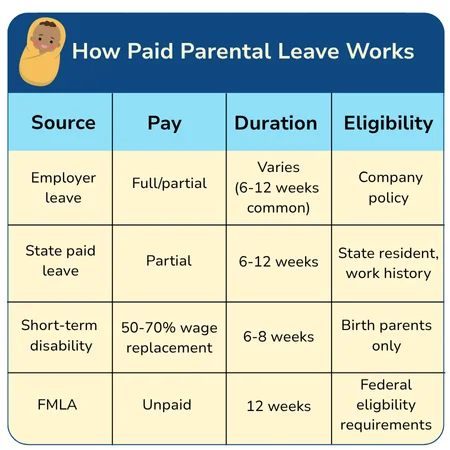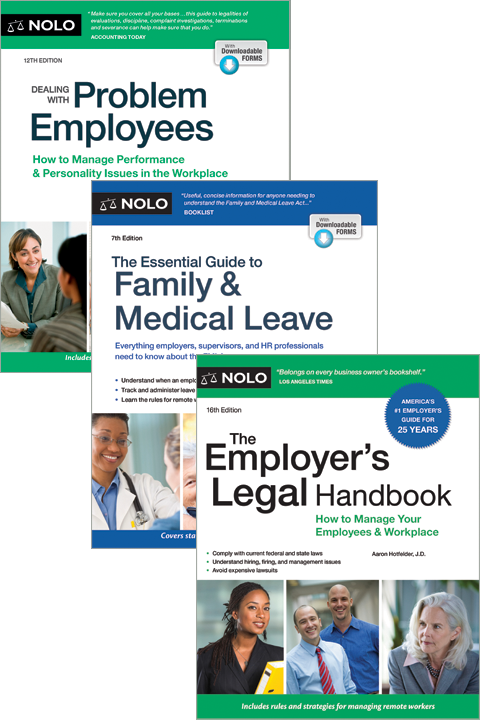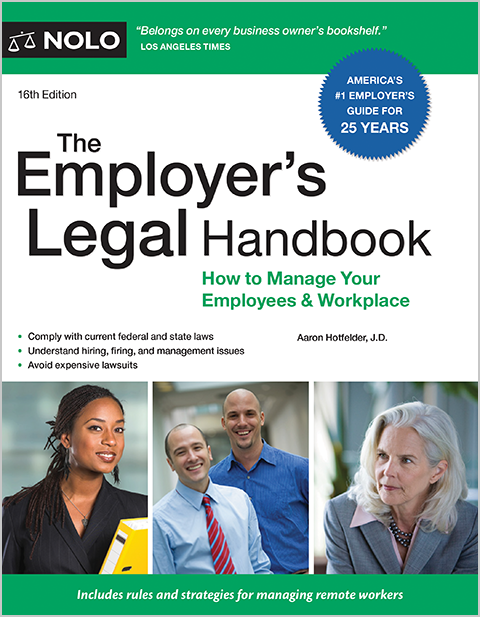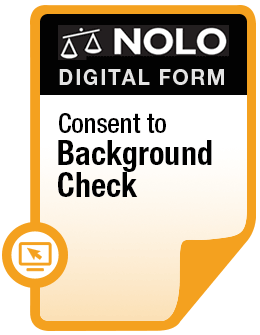While there's no federal paid leave law in the U.S., a combination of private insurance and (in some cases) state laws can provide you with benefits.
Preparing for the arrival of a baby is an exciting yet financially uncertain time for many expecting parents, especially when it comes to navigating time off from work. Common questions such as "How long can I take parental leave?" and "Can I get short-term disability approved for pregnancy?" don't always have simple answers due to the complex mix of private employer policies, state programs, and federal protections involved.
If you're planning on taking parental leave (also called maternity or paternity leave), it's important to understand the ways in which you can get paid during the time when you're not working. While there's no federal paid leave law in the U.S., you may still have access to income through a mix of government assistance and private insurance coverage. Knowing how these programs work together—like combining short-term disability and maternity leave—can help you plan for a smoother, more financially stable time off.
Using Paid Parental Leave
Most paid parental leave programs work by providing new parents with wage replacement at a percentage of their usual income for a certain period of time, allowing them to care for and bond with their new child. Depending on what state you live in and whether you have short-term disability insurance through your employer, these benefits can extend to cover several weeks of pregnancy and complications from delivery as well.
Paid State Short-Term Disability and Maternity Leave
Over a dozen states provide mandatory taxpayer-funded paid family leave and short-term disability insurance programs that offer benefits for residents who need to take time off to care for a newborn or give birth to a child. Other states have voluntary programs that allow you to opt in to a state-sponsored paid family leave program or that allow private insurers to offer coverage for paid family leave.
To learn more about how these programs work—and to find out whether your state provides paid disability and parental leave to its residents—check out our articles on which states have paid family leave programs and which states provide short-term disability benefits.
Private Short Term Disability Insurance
Private short-term disability insurance can be employer-provided or individually purchased. Most policies will replace at least half of your wages for a short period of time, typically between six weeks and six months. Because coverage can vary significantly between insurers, it's important that you read your policy provisions carefully to make sure that you won't have any lapse in income between when you take your pregnancy leave and when you return to work.
How to Get Short-Term Disability Approved While Pregnant
If you live in a state that offers paid short-term disability benefits for pregnant residents, you'll generally need to show that you've recently (within the past year) worked for a covered employer in the state and earned above a certain qualifying threshold. You'll also need to get a doctor to certify that you're unable to work while pregnant.
Is Being Pregnant a Disability?
While it may seem odd to think of pregnancy as a "disability," it's often treated as such for purposes of getting short-term disability benefits (public and private) or paid family leave. Pregnancy is considered a serious health condition that can qualify you for disability benefits if you're unable to work while pregnant.
Can You Apply for Short-Term Disability While Pregnant?
Yes, but you'll typically have to wait until you become unable to work before you can apply for (and receive) benefits. That means you can't get short-term disability just because you are pregnant, and you probably won't be able to apply well in advance of your expected delivery.
If you live in one of the states that offers short-term disability for pregnancy, you may be able to receive benefits for a few weeks before your due date, with an additional 2-3 months available postpartum depending on your type of delivery and whether you had any complications. For states that offer both temporary disability and paid family leave, you can receive disability benefits while you're recovering from childbirth and then switch to paid family leave when you're physically able to work but want more time off with your newborn.


FMLA and Maternity Leave
The Family and Medical Leave Act (FMLA) is a federal statute that allows employees to take up to 12 weeks off for certain medical and caretaking reasons, including bonding with a new child. Only employers with at least 50 employees must comply with the law, and employees must meet certain eligibility requirements.
Unlike the paid state programs and short-term disability insurance policies discussed above, FMLA leave is unpaid. So if you don't live in a state that provides paid maternity leave or you aren't covered by disability insurance, you won't get wage replacement under FMLA. However, you do have the right to use your accrued vacation days or sick pay during your FMLA leave, provided you meet the other requirements of your employer's policies.
For example, if you have to give 30 days' notice before using paid vacation, you'll need to do that in order to use your vacation days during an FMLA absence. Or if your employer's sick leave policy allows time off only for an employee's own sickness, you can use your sick pay only for the time when you are unable to work due to pregnancy or childbirth. Any time after that used to take care of your newborn will be unpaid under FMLA.
Additional Resources and Government Assistance During Maternity Leave
The U.S. Department of Health and Human Services (HHS) maintains a webpage on government aid programs geared towards helping expecting parents. These programs include housing and food assistance, child care, healthcare, workplace protections, and other forms of financial relief.
If you're planning on working up until you go into labor—or aren't sure what to do when you're ready to return to work—you should be aware of the many issues surrounding pregnancy in the workplace. Check out our articles addressing the following frequently asked questions:
- Am I Entitled to Light Duty Work While Pregnant?
- When Should I Tell My Employer That I'm Pregnant?
- Can I Be Fired While On Maternity Leave?
- Can I Quit During or After Maternity Leave?
- Am I Eligible for a Bonus While I'm On FMLA Leave?
You can help ease the transition between work and maternity leave by referring to our employee FMLA checklist. Keep in mind that you do have the right to reasonable accommodations in the workplace and protection against discrimination during your pregnancy. If you think that your rights have been violated, you may want to consider contacting an experienced employment lawyer to discuss your case.



